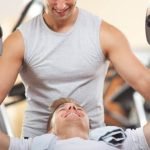Pole fitness has been gaining traction in recent years as a popular form of exercise that combines strength, flexibility, and grace. The question on everyone’s mind is pole fitness good exercise? The answer lies in the unique blend of physical, mental, and emotional benefits that it offers. This article will delve into the various aspects of pole fitness to provide a comprehensive understanding of its effectiveness as a workout regimen.
In this modern age, pole fitness has evolved beyond its traditional association with exotic dancing and has found a place in mainstream fitness culture. With classes and studios popping up around the world, more people are embracing pole fitness as an innovative way to stay fit and healthy. The growing popularity of this unconventional workout speaks volumes about its effectiveness and appeal to a diverse range of individuals.
As we explore the concept of pole fitness in this article, we will delve into its physical benefits such as strength, flexibility, and overall body conditioning. Additionally, we will examine its cardiovascular benefits, mental and emotional advantages, the core and upper body workout it provides, safety concerns, and the challenge it presents.
By the end of this piece, you’ll have a comprehensive understanding of whether or not pole fitness is indeed good exercise. Keep reading to discover more about this intriguing form of physical activity.
The Physical Benefits of Pole Fitness
Pole fitness has gained significant traction in the fitness world as a fun and unique way to stay in shape. Its combination of dance, acrobatics, and strength training makes it a full-body workout that is both challenging and rewarding. It is not just for entertainment, but is also often used as a form of exercise.
One of the physical benefits of pole fitness is its ability to improve strength. By engaging various muscle groups simultaneously during pole routines, individuals can see improvements in their upper body, core, and leg strength. This comprehensive workout helps build muscle endurance and overall body conditioning.
Additionally, pole fitness is also an effective way to increase flexibility. The various spins, holds, and transitions in pole routines require participants to achieve a greater range of motion over time. As individuals continue to practice pole fitness, they will notice improved flexibility in their hamstrings, shoulders, and back.
Overall body conditioning is another major physical benefit of pole fitness. Engaging in regular practice can lead to enhanced muscular definition and tone throughout the entire body.
To illustrate:
- Improved upper body strength
- Increased core strength
- Enhanced leg strength
With these benefits combined, it’s clear that pole fitness is much more than just a form of artistic expression – it is an excellent form of exercise that offers numerous physical advantages.
The Cardiovascular Benefits of Pole Fitness
Pole fitness is not just about building strength and flexibility, it also provides excellent cardiovascular benefits. Here are some of the ways pole fitness can improve your heart health:
- Increased heart rate: During a pole fitness workout, your heart rate is elevated as you perform dynamic movements and transitions on the pole. This helps to improve cardiovascular endurance and stamina. By consistently engaging in pole fitness, individuals can enhance their overall heart health and reduce the risk of cardiovascular diseases.
- Full-body workout: Pole fitness involves continuous movement and active engagement of various muscle groups throughout the body. This results in improved blood circulation and oxygen delivery to the muscles, which is essential for maintaining a healthy cardiovascular system.
- High-intensity intervals: Many pole fitness routines incorporate intervals of high-intensity movements, followed by periods of lower intensity or rest. This type of training has been shown to be effective in improving cardiovascular fitness and burning calories.
Pole fitness not only challenges your physical strength and flexibility but also provides a fun and effective way to boost your cardiovascular health. Whether you’re looking to elevate your heart rate, improve endurance, or simply add variety to your workout routine, pole fitness offers a unique way to achieve these goals while enjoying a full-body workout.
Mental and Emotional Benefits of Pole Fitness
Pole fitness is not only a great workout for the body but also has numerous mental and emotional benefits. Many individuals find that participating in pole fitness can lead to an improvement in their overall confidence, self-esteem, and body positivity. This section will delve into how pole fitness can have a positive impact on mental and emotional well-being.
Boosting Confidence and Self-Esteem
Engaging in pole fitness requires individuals to challenge themselves physically and mentally, which can lead to a boost in confidence and self-esteem. As participants learn new moves and tricks on the pole, they gain a sense of accomplishment and pride in their abilities. Overcoming these challenges can translate into improved confidence not only within the studio but also in other areas of life.
Promoting Body Positivity
Pole fitness promotes body positivity by emphasizing what the body can do rather than focusing on its appearance. Participants are encouraged to appreciate their strength, flexibility, and agility rather than solely focusing on aesthetics. This shift in perspective can lead to greater acceptance of one’s body and a more positive relationship with it.
Embracing Personal Growth
Engaging in pole fitness often involves pushing past comfort zones and facing fears. As individuals conquer new skills and movements, they experience personal growth, which can lead to increased self-assurance and an expanded belief in one’s capabilities. Pole fitness encourages a mindset of continuous improvement and resilience, which is beneficial for overall mental well-being.
The Core and Upper Body Workout of Pole Fitness
Pole fitness is an effective full-body workout that primarily targets the core and upper body muscles. Engaging in pole fitness classes or sessions can lead to a toned and sculpted core, arms, shoulders, and back. During a pole fitness session, various muscle groups are activated as individuals perform challenging moves and poses on the pole.
One of the primary muscle groups targeted during pole fitness is the core muscles, including the rectus abdominis (commonly known as the six-pack muscles), obliques, and transverse abdominis. These muscles are engaged to stabilize the body during spins, inversions, and holds on the pole. Additionally, the upper body muscles such as the biceps, triceps, deltoids, and latissimus dorsi are significantly worked as individuals lift their body weight off the ground while performing intricate movements.
In addition to sculpting and toning the core and upper body muscles, pole fitness also helps improve overall strength and endurance. The dynamic nature of pole fitness movements requires individuals to engage multiple muscle groups simultaneously, leading to a comprehensive strengthening workout.
As a result, participants often experience increased muscular endurance in their arms, shoulders, and core over time. Overall, pole fitness is a highly effective form of exercise for developing upper body strength and achieving a lean and toned physique.
| Muscle Group | Benefits |
|---|---|
| Core Muscles | Improved stability and toning of abdominal muscles |
| Upper Body Muscles | Enhanced strength in arms, shoulders, back |
| Full Body Workout | Engages multiple muscle groups for overall strength development |
Safety and Injury Prevention in Pole Fitness
Pole fitness is not only a fun and challenging form of exercise, but it also offers numerous physical and mental benefits. However, like any physical activity, it’s important to consider safety and injury prevention when practicing pole fitness. Addressing common concerns about safety and providing tips for preventing injuries in pole fitness is crucial for ensuring a positive and safe experience.
One of the most important aspects of safety in pole fitness is proper technique. This includes learning how to execute moves correctly, using proper grip on the pole, and maintaining good posture throughout the exercises. A certified instructor can provide guidance on correct techniques and ensure that students are using proper form to minimize the risk of injury.
Additionally, warm-up and cool-down exercises are essential components of injury prevention in pole fitness. Warming up helps prepare the body for physical activity by increasing blood flow to the muscles, while cooling down allows the body to gradually return to its resting state, reducing the risk of muscle soreness or injury. Incorporating these practices into a pole fitness routine can help prevent strains and other injuries.
Finally, it’s important for individuals practicing pole fitness to listen to their bodies. Pushing too hard or attempting advanced moves without sufficient strength or skill can increase the risk of injury. It’s essential for participants to progress at their own pace, gradually building strength and skills over time. By paying attention to their bodies and practicing patience, individuals can reduce the likelihood of injury while enjoying the many benefits that pole fitness has to offer.
| Aspect | Importance |
|---|---|
| Proper Technique | Minimizes risk of injury by ensuring correct execution of moves |
| Warm-up/Cool-down Exercises | Reduces risk of strains and muscle soreness through proper preparation and recovery |
| Listening to Body | Prevents overexertion and pushing beyond one’s capabilities leading to lower risk of injury |
The Challenge of Pole Fitness
Pole fitness is not only a fun and effective way to stay in shape, but it also offers a unique set of challenges that can lead to personal growth and feelings of accomplishment. In this section, we will explore the physical and mental challenges of pole fitness and how they contribute to overall well-being.
Physical Challenges
One of the biggest physical challenges of pole fitness is building strength and endurance. Many people are surprised to find out just how physically demanding pole dancing can be. The acrobatic movements and holds require significant upper body, core, and leg strength. As students progress in their training, they often find themselves achieving moves they initially deemed impossible, which can be incredibly empowering.
In addition to strength, flexibility plays a key role in mastering pole fitness. Flexibility training is an integral part of pole fitness as it enables dancers to execute various spins, transitions, and poses with ease. This physical challenge can lead to increased mobility and reduced risk of injury as students improve their flexibility through regular practice.
Mental Challenges
While the physical demands of pole fitness are undeniable, the mental challenges are just as significant. Pole dancing requires focus, determination, and patience. Learning new moves or choreography can be frustrating at times, but overcoming these mental hurdles fosters resilience and perseverance. Additionally.
performing in front of others on stage or even just in a class setting can help boost confidence levels over time.
Setting measurable goals such as mastering a particular move or routine helps practitioners stay motivated while increasing their sense of accomplishment.
Finally, by confronting these mental challenges head-on while pursuing progress in their pole fitness practice – practitioners develop powerful coping mechanisms that carry over into everyday life situations beyond the studio.
Overall,pole fitness is an exhilarating activity that offers numerous benefits for both mind and body through its unique combination of physicality along with the ongoing intellectual stimulation involved.
Conclusion
In conclusion, pole fitness is not just a trendy workout, but it is indeed good exercise that offers numerous physical, mental, and emotional benefits. The unique combination of strength training, flexibility work, and cardiovascular conditioning make pole fitness a comprehensive and effective way to improve overall fitness and health. Additionally, the mental and emotional benefits of building confidence, self-esteem, and body positivity through pole fitness cannot be overstated.
Furthermore, the core and upper body workout provided by pole fitness is unmatched, targeting specific muscles to help individuals achieve a toned physique. With proper safety measures in place, the risk of injury in pole fitness is relatively low compared to other high-intensity workouts. The challenges presented by pole fitness also offer opportunities for personal growth and accomplishment as individuals progress in their practice.
Overall, the growing popularity of pole fitness is a testament to its effectiveness as a form of exercise. Whether you are looking to build strength, improve flexibility, boost your cardiovascular health or enhance your mental well-being-pole fitness offers a complete package. If you have been hesitant about trying pole fitness before reading this article, I encourage you to give it a try for yourself-you may just discover a new favorite workout.
Frequently Asked Questions
Is Pole Fitness Effective?
Pole fitness can be very effective for building strength, increasing flexibility, and improving overall fitness. It targets various muscle groups and can provide a challenging full-body workout.
Can You Lose Weight Doing Pole Fitness?
Yes, pole fitness can definitely help with weight loss. It’s a form of exercise that combines cardio and strength training, which can contribute to burning calories and shedding pounds when combined with a healthy diet.
How Many Times a Week Should You Do Pole Fitness?
The frequency of doing pole fitness depends on individual goals and fitness levels. Beginners may start with 1-2 times a week to allow the body to adapt, while more advanced practitioners may do 3-4 sessions per week to see significant progress in their skills and strength.

Passionate about providing useful information to anyone with an interest in the field of Personal Training, I strive to pass on to our readers quality information and to answer any questions about Personal Trainers, the work they do and how to become one.





